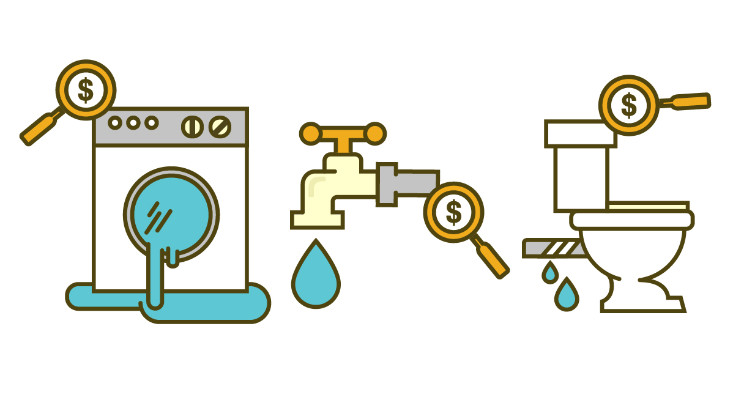
Water utilities might not often think of it, but water leaks contribute to a significant portion of home repair costs each year. There are many causes of water damage including things like household flooding, faulty plumbing, appliance failures, leaky fixtures, and irrigation system problems. While many people underestimate the risk of water damage to their homes, statistics from the insurance industry cast a light on the reality of how water can impact what is, for most people, the largest financial investment they will make in their lifetime.
To begin with, residential water damage is probably a lot more common than most people think. In fact, approximately 14,000 people experience some type of water damage at home or at work each day. That’s nearly two-thirds of a sell out crowd in Madison Square Garden in New York City. Also, 98% of residential basements in the United States will experience some type of water damage in their lifetimes. This translates to 37% of homeowners claiming losses due to water damage.
This should be an issue of concern for water utilities managers. Many residential customers will immediately pick-up their phone to call the utility for help in the event of a high bill. In more cases than not, the cause of these excessive bills is due to water leaks that are the responsibility of the homeowner, not the utility. This results in inappropriate and costly customer service calls that can possibly be reduced with appropriate programs in place to educate end-use customers and arm them with information that can help them address their own water-related problems.
Water leaks that cause damage may be more insidious than is initially obvious. A water line crack as small as 1/8 of an inch can leak as much as 250 gallons of water daily, and a leaky toilet flapper looses around 200 gallons each day. Even a faucet leaking as little as one drip per second can waste up to 3,000 gallons of water each year.
The volume of water losses due to these problems is also staggering when looking at the numbers in aggregate. Depending on the year, residential water leaks can add up to over 1 trillion gallons of lost water. This is equal to the annual water use of Los Angeles, Chicago, and Miami – combined! In addition to all this lost water (much of it potable), there is an associated waste of energy used to treat and transport this water to our homes, as well as the associated greenhouse gases that are emitted through the generation of this energy.
So while it is clear the scope of residential water losses is large, what does this mean from a cost perspective? While flooding tends to be the most expensive damage inflicted on homeowners and insurance providers, other costly problems such as leaky fixtures, frozen pipe related failures, water heater supply line failures, and other appliance leaks can range from $25,000 down to $3,500 per incident. In aggregate, the U.S. insurance industry attributes about $2.5 billion paid out each year for water damage related claims. This is an average of nearly $7,000 per household claim. Depending on the structure of the homeowners’ insurance policy, this can be thousands of dollars in deductible payments that aren’t covered by insurance and are borne directly by homeowners themselves.
But not all is lost. There are many things homeowners can do, both small and large, to protect their property from costly water damage. To start with, individuals should regularly inspect their water bill and look for unusually high volumetric charges. A change in usage can indicate a hidden leak. Make sure to compare similar seasonal periods as water usage tends to be higher in the summer months when the weather is warmer and more outdoor irrigation is taking place. If a customer is fortunate enough to have a water utility that works with WaterSmart, they will have access to all of this data through a customer portal, which offers the ability to register for alerts to inform users of unusual usage patterns. In addition, the WaterSmart platform walks users through a step-by-step process to investigate common sources of leaks and ways to resolve them.
In addition to paying closer attention to bills and associated water use, there are other things users can regularly do to reduce the likelihood that household leaks go undetected. This includes checking toilets for leaks, verifying irrigation control schedules, and replacing hoses on appliances such as washing machines, dishwashers, and ice makers when there are signs of wear. Hiring a plumber periodically to inspect and maintain water heaters and inspect plumbing systems is another valuable investment. An ounce of prevention…well, you know.
Ultimately, it is up to the individual homeowner to address leaks that occur ‘behind the meter’. While the water utility can help customers better understand usage, leaks are the responsibility of the resident. By arming customers with useful data and easy to understand instructions on how to mitigate leaks, utilities can build stronger relationships with their end-users and also reduce costs for individuals and the communities in which they reside. This is the flip side of hidden costs – hidden opportunities.


